His Majesty King Bhumibol Adulyadej The Great
Chapter 2: The Mahidol Royal Lineage

Her Royal Highness Princess Srinagarindra, the Princess Mother, His Majesty King Ananda Mahidol (Rama VIII)
His Majesty King Bhumibol Adulyadej the Great (Rama IX) and Her Royal Highness Princess Galyani Vadhana, Princess of Naradhiwas
His Majesty King Bhumibol Adulyadej the Great was the younger son of His Royal Highness Prince Mahidol Adulyadej, Prince of Songkla, the founder of the Mahidol royal lineage, and Her Royal Highness Princess Srinagarindra, the Princess Mother (also known as Princess Sri Sangwan).
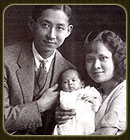
His Royal Highness Prince Mahidol Adulyadej, Prince of Songkla, the Royal Father
Her Royal Highness Princess Srinagarindra, the Princess Mother
and His Majesty King Bhumibol Adulyadej the Great
Her Royal Highness Princess Galyani Vadhana, Princess of Naradhiwas, wrote in the preface to the book “Chao Nai Lek Lek: Yuwakasat” (1987: Preface), referring to the origin of the Mahidol royal lineage as follows: “The Mahidol Royal Lineage.”
Before the reign of King Vajiravudh (Rama VI), Thai people did not use surnames. When individuals had the same name, it was necessary to specify who their parents were or where they came from. The Surname Act was enacted in 1913 (B.E. 2456). For members of the royal family, this posed little difficulty since their names were long and unique. However, for women who married into the royal family and had no surname to identify their royal lineage, titles were used instead: Mom for commoners, Mom Luang or Mom Rajawongse for those of noble birth, Chaya for daughters of Mom Chao (His Serene Highness), and Phra Chaya for daughters of Phra Ong Chao (His Highness), followed by the name of the royal husband. For instance, after my mother received the ceremonial water blessing, she was titled Mom Sangwan in Prince Mahidol Adulyadej, Prince of Songkla, since she had not yet been granted a royal surname. In English, ‘Mom’ was not translated as ‘Princess’ but rather written as ‘Madame’, such as Madame de Pitsanulok (Mom Catherine, wife of Prince of Phitsanulok) or Madame de Songkla (my mother). While residing in the United States, Prince Mahidol used the name Mr. Mahidol Songkla, and my mother used Mrs. Songkla. All of us children, therefore, used the surname Songkla.
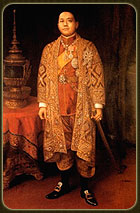
His Majesty King Vajiravudh (Rama VI)
His Royal Highness Prince Mahidol Adulyadej, Prince of Songkla
His Royal Highness Prince Mahidol Adulyadej, Prince of Songkla, the Royal Father, was the 69th son of His Majesty King Chulalongkorn (Rama V), also known as “Phra Piya Maharaj,” and the 7th son of Her Majesty Queen Sri Savarindira, the Queen Grandmother (Queen Savang Vadhana).
Many people, including royals and officials, requested surnames from King Vajiravudh (Rama VI). Due to the large number of requests, he was unable to grant one to Prince Mahidol Adulyadej, son of King Chulalongkorn (Rama V). King Prajadhipok (Rama VII) later granted the surname in June 1929, three months before Prince Mahidol’s passing. He was posthumously elevated to the rank of Krom Luang two months later. My mother then became Mom Sangwan Mahidol na Ayudhya, while we, the children, did not use surnames at the time, as royal family members of Phra Ong Chao rank and above were exempt. However, when we moved to Switzerland and lived incognito, we adopted the surname Mahidol, since the Swiss could not understand how anyone could be without a surname.
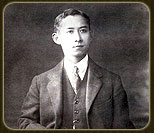

His Majesty King Chulalongkorn (Rama V)
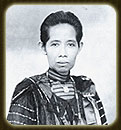
Her Majesty Queen Sri Savarindira, the Queen Grandmother, Phra Phan Watt Sa Ayika Chao (also known as Queen Savang Vadhana).
He was born on a Friday in the second lunar month of the Year of the Rabbit, corresponding to January 1, 1891 (B.E. 2434). His full name in the royal genealogy record (Suphan Bat) is:
Somdet Chao Fa Chai Mahidol Adulyadej Noraset Maharajathibodin Chulalongkorn Narindharavarangkun Sombun Benjapornsirisawas Khattiya Ropatosuchat Khunsangkhat Kiattiprakrit Laknavijit Phisitburut Chanuttamaratphatthanaksa Akkhawarrajakumarn.
Prince Mahidol Adulyadej began his education at the Grand Palace. At about the age of 13, he was sent to study in England. During his first year, he stayed with a family of a royal tutor. Later, he attended Harrow School for over a year before requesting royal permission to transfer to military studies in Germany.
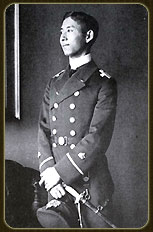
Dressed in the standard blue-black uniform of a German naval cadet, adorned with shoulder boards and the emblem on the cap, and equipped with a naval dagger with portepee in the manner of German naval officers, circa 1911–1912.
He first pursued his studies at the Cadet School in Potsdam, and later continued at the Cadet School in Grosslichterfelde, on the outskirts of Berlin. Subsequently, His Majesty King Vajiravudh (Rama VI) commanded that he be transferred to study at the Naval Academy.
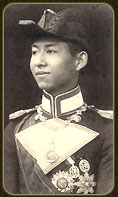
In full dress uniform of a Lieutenant of the Imperial German Navy, adorned with Thai royal decorations, circa 1911–1912.
He completed the entire course of study, with the exception of the ship command training, but was compelled to return to Siam due to the outbreak of the First World War. Upon his return, he served in the Royal Thai Navy for nearly one year before requesting royal permission to pursue medical studies in the United States. He enrolled at Harvard University, where in his third year he shifted his focus to public health. He successfully graduated on 31 June 1921.
After returning to Siam, he was appointed, by royal command, as the Rector of the Department of Universities under the Ministry of Religious Affairs (presently the Ministry of Education). Later, he requested royal permission to return once more to the United States, in order to complete the medical studies he had left unfinished at Harvard University and also to receive medical treatment, as his health was fragile.
Due to his tireless dedication to his studies, he graduated in 1928 with honors, receiving the degree of Doctor of Medicine, and was inducted as a member of the Alpha Omega Alpha Honor Medical Society.
Upon his return to Siam, Prince Mahidol Adulyadej intended to serve as a resident physician at Siriraj Hospital. However, his high royal status (as, at that time, he bore the title of Somdet Phra Chao Piya Thoe in the reign of King Rama VII) posed an obstacle. Consequently, he went on to work at McCormick Hospital instead.
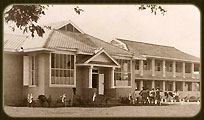
McCormick Hospital
In Chiang Mai Province, he devoted all his time to caring for patients. After only three weeks of service, he fell gravely ill and had to return to reside at the Srapathum Palace for treatment. He suffered from severe hepatitis for a period of four months and passed away on 24 September 1929 at 4:45 p.m., at the age of 38 years, 8 months, and 23 days. His passing brought profound grief to the nation.
The royal titles and honorific names bestowed upon him were as follows:
1891 (B.E. 2434): Somdet Chao Fa Mahidol Adulyadej
1903 (B.E. 2446): Krom Khun Songkhla Nakarin
1929 (B.E. 2472): Krom Luang Songkhla Nakarin
1970 (B.E. 2513): Somdet Phra Mahitalathibet Adulyadejvikrom, Phra Boromrajchanok (Prince Father)
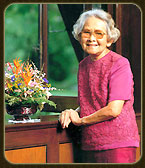
Her Royal Highness Princess Srinagarindra, the Princess Mother
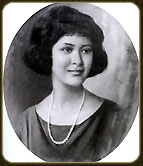
Her Royal Highness Princess Srinagarindra, the Princess Mother (born Sangwan Talapat)
Her Royal Highness Princess Srinagarindra, the Princess Mother (born Sangwan Talapat), was originally a commoner from a goldsmith family. She was born on 21 October 1900 to her father, Chu, and her mother, Kham. She had two older siblings and one younger sibling.
At the age of seven or eight, relatives on her father’s side presented her to serve as a lady-in-waiting to Her Royal Highness Princess Valaya Alongkorn, Krom Luang Phetchaburi Rajsirin, daughter of His Majesty King Chulalongkorn (Rama V) and Her Royal Highness Princess Sri Savarindira. Princess Valaya Alongkorn was the elder half-sister of Prince Mahidol Adulyadej.
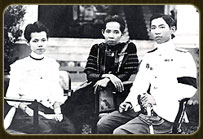
Her Royal Highness Princess Valaya Alongkorn, Krom Luang Phetchaburi Rajsirin, Princess Grandmother, and His Royal Highness Prince Mahidol Adulyadej, Krom Luang Songkhla Nakarin, the royal father.
Her Royal Highness Princess Srinagarindra studied at Satri Witthaya School. At the age of thirteen, she entered the School of Midwifery and Nursing at Siriraj Hospital. After completing the three-year program, she was selected as one of only two scholarship students by Her Royal Highness Princess Sri Savarindira to study in the United States in 1917. At that time, Prince Mahidol Adulyadej was studying at a university in Boston and took a personal interest in the welfare of all Thai students. He personally welcomed the students from Thailand, marking the first time he met Princess Srinagarindra. Later, they became engaged in a private ceremony. Princess Srinagarindra continued her studies in the Department of Public Health at Harvard University and the Massachusetts Institute of Technology (MIT), specializing in school hygiene, and completed the program successfully.
Upon returning to Thailand, Prince Mahidol Adulyadej requested royal permission to marry Princess Srinagarindra. His Majesty King Vajiravudh (Rama VI) personally officiated the water-pouring ceremony at Srapathum Palace on 10 September 1920. Later that same year, Prince Mahidol returned to the United States to continue his studies, while Princess Srinagarindra attended Simmons College in Boston as a special student in a preparatory nursing program for approximately one semester and successfully passed the examinations. She then studied School Health (public health for schools) during the summer sessions at the Massachusetts Institute of Technology (MIT) between 1926 and 1928. Princess Srinagarindra also returned to Simmons College to study psychology, home economics, and dietetics.
Upon returning to Thailand during 1929–1930, she studied English, French, algebra, and botany through a correspondence program offered by Columbia University. Before moving to Lausanne, Switzerland, in 1933, she also studied French at the Alliance Française, which offered courses to the public at Chulalongkorn University.
When Prince Mahidol Adulyadej passed away in 1929, Princess Srinagarindra was 29 years old. She assumed responsibility for raising and educating their children, both in Thailand and while they studied abroad. Princess Srinagarindra was the mother of two sons who later ascended the throne as kings of Thailand.
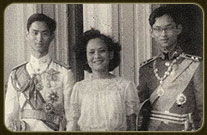
His Majesty King Ananda Mahidol, Her Royal Highness Princess Srinagarindra, the Princess Mother, and His Majesty King Bhumibol Adulyadej, the Great.
She served as an exemplary model of virtue and carried out royal duties with diligence and dedication, providing numerous benefits to the nation and its people. She continued the royal initiatives of Prince Mahidol Adulyadej and possessed a heart full of compassion, showing concern for the welfare of the general populace.
Around 1947, while residing in Switzerland, Princess Srinagarindra developed an interest in Sanskrit and began studying the language at the University of Lausanne. Initially, there were ten students, but eventually she became the only one remaining, as the subject was extremely challenging. Professor Regamey served as her instructor. Later, she also studied Pali and conducted research on Buddhist scriptures, which greatly deepened her understanding of Buddhism.
While residing in Thailand, Princess Srinagarindra carried out royal duties in education, religion, and public welfare. She established the Border Patrol Police Foundation and dedicated her own funds, while also encouraging others to contribute, to build schools for the Border Patrol Police and in remote rural areas—approximately 200 schools throughout the country.

She visited the Border Patrol Police.
In 1969, she initiated the establishment of volunteer medical units to provide services free of charge. Later, she founded the Princess Mother’s Medical Volunteer Foundation (POSWA) to support the activities of these volunteer medical units. She also established the Princess Mother’s Fund and personally contributed resources to support various public welfare initiatives.
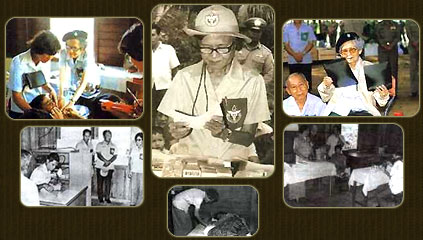
Her Royal Highness Princess Srinagarindra, the Princess Mother, and the activities of the Volunteer Medical Units (POSWA)
Through her great benevolence, she was deeply respected and loved by the people. They affectionately referred to her as “Mae Fah Luang” or “Somdet Ya,” names that express profound respect, love, and a strong sense of personal attachment.
Somdet Phra Srinagarindra Borommaratchachonnani was one of the most eminent women of the nation and a model of a life worthy of admiration. She was an accomplished athlete, enjoying skiing, horseback riding, badminton, and pétanque. She was also an excellent photographer and a dedicated art and heritage conservator. With her far-sighted vision, she was a modern woman who promoted family planning and population quality development from the time these matters were first introduced to the Thai people. She preferred a simple lifestyle, avoiding extravagance.
In her later years, Somdet Phra Srinagarindra Borommaratchachonnani resided at the Doi Tung Royal Villa in Chiang Rai Province, which offered beautiful scenery and a cool climate, well-suited to her health and conducive to both leisure and agricultural work.
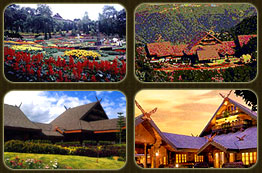
Doi Tung Royal Villa, Chiang Rai Province
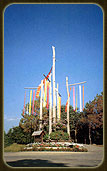
Tung, a symbol of Lanna civilization with Buddhism as its foundation, arranged in clusters at the entrance of Doi Tung Royal Villa Park, Chiang Rai Province.
Her Majesty Princess Srinagarindra, the Princess Mother, lived a long life, accumulating vast experience and exceptional merit that few could equal. With such a venerable age, she became a pillar of the royal family and the nation. She witnessed five reigns of Thai kings, experiencing both happiness and sorrow, gaining deep understanding of the natural order of the world. She conducted herself with purity and grace. In 1970 (B.E. 2513), by royal decree, she was bestowed the title Somdet Phra Srinagarindra Boromarajajonani, placing her in the highest rank of the Chakri Dynasty.
Her Majesty devoted herself to royal duties continuously for over 50 years, becoming a source of inspiration and a true pride for all Thai people. She lived to over 90 years, and in her later years, she received medical care at Siriraj Hospital. Her Majesty Princess Srinagarindra passed away on 18 July 1995 at 9:17 p.m., bringing profound grief to the entire nation.
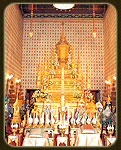
The Royal Funerary Urn at the Dusit Maha Prasat Throne Hall

The Royal Cremation Ceremony at the Royal Crematorium, Sanam Luang
The royal titles conferred and the corresponding elevations of Her Majesty were as follows:
1920 (B.E. 2463): Mom Sangwan, in the rank of Somdet Chao Fa, Krom Khun Songkhla Nakhonrin
1929 (B.E. 2472): Mom Sangwan Mahidol Na Ayudhya
1934 (B.E. 2477): Phra Ratchanani Si Sangwan
1938 (B.E. 2481): Somdet Phra Ratchanani Si Sangwan
1970 (B.E. 2513): Somdet Phra Srinagarindra Borommarachachonnani

Postures and Gestures in Her Childhood
Royal Sons and Daughters
Somdet Phra Mahitala Thibeshra Adulyadej Vikrom, the King’s Father, and Somdet Phra Srinagarindra Borommarachachonni had a total of three children, including daughters and sons, as follows:

1. Her Royal Highness Princess Galyani Vadhana, the Princess of Naradhiwas Rajanagarindra
The royal titles he received and the years he was granted them are as follows:
1923 (B.E. 2466): Mom Chao Kalyaniwattana
1927 (B.E. 2470): Phra Worawong Thoe Phra Ong Chao Kalyaniwattana
1934 (B.E. 2477): Somdet Chao Fa Kalyaniwattana
1995 (B.E. 2538): Conferred the rank of Krom Luang Naradhiwas Rajanagarindra
2. His Majesty King Ananda Mahidol (Rama VIII), Adulyadej Vimalramathibodi, Chakri Naruebodin, Siamindramathirat
He was born on Sunday, the 20th of September, 1925 (Year of the Ox), in Heidelberg, Germany.
The royal titles he received and the years he was granted them are as follows:
1925 (B.E. 2468): Mom Chao Ananda Mahidol
1927 (B.E. 2470): Phra Worawong Thoe Phra Ong Chao Ananda Mahidol
2nd March 1934 (B.E. 2477): Ascended the throne
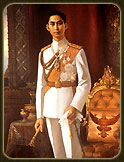

3. His Majesty King Bhumibol Adulyadej the Great (Rama IX), the Sovereign King of Thailand
His original name was: “Phra Bat Somdet Phra Paraminthara Maha Bhumibol Adulyadej Mahitaladhibes Ramathibodi Chakri Naruebodindra Siamindradhiraj Bhumibol Adulyadej.”
He was born on Monday, the 12th day of the waxing moon of the first lunar month, Year of the Rabbit, Nopasak, Chula Sakarat 1289, corresponding to 5th December 1927, at Mount Auburn Hospital, Cambridge, Massachusetts, United States.
The royal titles he received and the years granted are as follows:
1927 (B.E. 2470): Phra Worawong Thoe Phra Ong Chao Bhumibol Adulyadej
1934 (B.E. 2489): Somdet Phra Chao Nong Ya Thoe Chao Fah Bhumibol Adulyadej
9th June 1946 (B.E. 2477): Ascended the throne
Note: The royal name “Bhumibol” means “The strength of the land, an incomparable power.”

